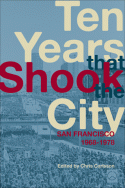MCO and Latino Community Formation: Difference between revisions
(added tour navigation to top of page) |
m (Protected "MCO and Latino Community Formation" ([edit=sysop] (indefinite) [move=sysop] (indefinite))) |
(No difference)
| |
Revision as of 13:02, 20 April 2011
Historical Essay
Listen to an excerpt from "All Those Who Care About the Mission, Stand Up With Me!" by Tomas Sandoval (read by Adriana Camarena):
<embed src="http://www.archive.org/flow/flowplayer.commercial-3.2.1.swf" type="application/x-shockwave-flash" width="640" height="26" allowfullscreen="true" allowscriptaccess="always" cachebusting="true" bgcolor="#000000" quality="high" flashvars="config={'key':'#$aa4baff94a9bdcafce8','playlist':[{'url':'13TomasSandovalFolsomAnd23rdMastered2.mp3','autoPlay':false}],'clip':{'autoPlay':true,'baseUrl':'http://www.archive.org/download/13TenYearsMissionCoalitionOrganization/'},'canvas':{'backgroundColor':'#000000','backgroundGradient':'none'},'plugins':{'audio':{'url':'http://www.archive.org/flow/flowplayer.audio-3.2.1-dev.swf'},'controls':{'playlist':false,'fullscreen':false,'height':26,'backgroundColor':'#000000','autoHide':{'fullscreenOnly':true},'scrubberHeightRatio':0.6,'timeFontSize':9,'mute':false,'top':0}},'contextMenu':[{},'-','Flowplayer v3.2.1']}"> </embed>
by mp3.
Continue the Ten Years Tour
Previous stop: Flowering communalism
Next Stop #14: Women's self-health
Beginning in 1967, the largely working-class, heavily immigrant, and decidedly multiracial neighborhood of the Mission District underwent a profound transformation. Incited by the specter of urban redevelopment, and set against the backdrop of local movements for racial justice, this multigenerational population of both the politically-active and previously uninvolved came together under the common cause of community as embodied in the MCO. Called the “largest urban popular mobilization in San Francisco’s recent history,” they united for jobs, housing, education reform, and the power to implement their collective vision.2 In the process, they asserted a powerful sense of cultural citizenship, “of claiming what is their own, of defending it, and of drawing sustenance and strength from that defense.”3 By 1973, when the formal organization declined, the Mission remained a far more cohesive community than it was before, reshaping their sense of collective identity in fundamental ways.
The politicized Latino community of the Mission District continues to act on its own behalf in the neighborhood's public spaces, as seen in this May 1st 2006 Immigrant Rights March that drew over 10,000.
Photo: Chris Carlsson
Designed as a grassroots, multi-issue coalition composed of scores of local organizations, the MCO actively involved 12,000 residents who sought democratic control over their neighborhood on behalf of the more than 70,000 people who lived there. At its height, the MCO became an institutional force, both the recognized voice of the district in political circles and the local group controlling funds from the Model Cities Program—a 1966 community development effort by the federal government mandating citizen participation. Through an assortment of programs and campaigns, they made lasting and meaningful changes to the infrastructure of everyday life for both contemporary and succeeding generations of local residents. The legacy of the MCO—balanced on a multiracial and working-class population successfully claiming rights and ownership over their neighborhood—extends beyond the programmatic. In the ways it envisioned its collective effort, and integrated and deployed the racial/ethnic diversity of the Mission, the MCO nurtured a collective community identity within the population largely of Latin American descent. As a result, they recreated the historic community identity of the Mission District, substantively rooting a hybrid and shifting form of class-based latinidad in the neighborhood, an identity which continues to shape its present in myriad ways.
by Tomas Sandoval, from his essay "All Those Who Care About the Mission, Stand Up With Me!," in the anthology "Ten Years That Shook the City: San Francisco 1968-78" (City Lights Foundation: 2011), edited by Chris Carlsson.
 Find the book at City Lights!
Find the book at City Lights!


